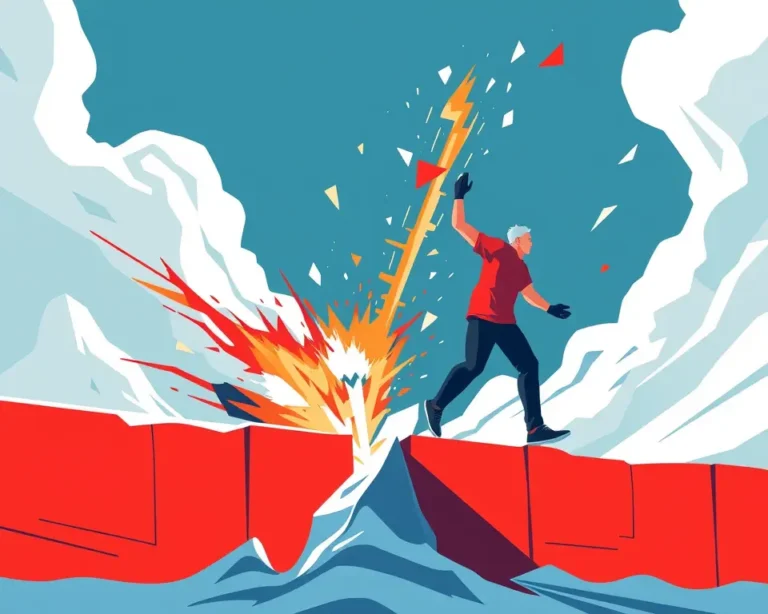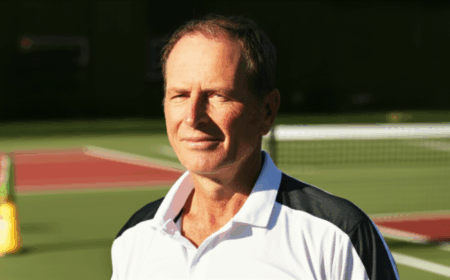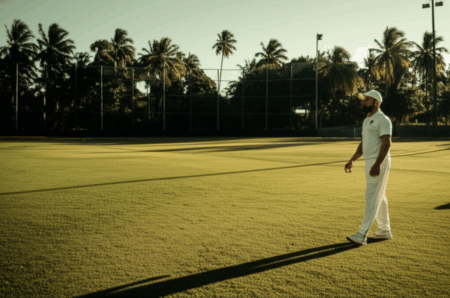Mikaela Shiffrin, the celebrated American alpine ski racer, faced an unexpected and daunting challenge during a World Cup race in Killington, Vermont, in November 2024. A crash resulted in a puncture wound to her abdomen and severe muscle trauma, derailing her pursuit of a historic 100th World Cup victory. This injury wasn’t just a setback; it was a “stab wound,” as she described it, that required surgery and a grueling rehabilitation process. Now, months later, Shiffrin is not only back on the slopes but also sharing insights into the meticulous and determined approach she took to rebuild her strength and return to peak performance.
The Injury and Initial Recovery
On November 30, 2024, during the giant slalom run in Killington, disaster struck. Shiffrin crashed hard, suffering a puncture wound to her right abdomen and severe muscle trauma. The injury was significant, requiring surgery to prevent infection and address the damage to her oblique muscles.
In the immediate aftermath, Shiffrin faced basic challenges. Six weeks before her return to competition, she lacked the core strength to even get out of a chair without assistance. Actions as simple as sneezing or laughing triggered pain. The initial phase of recovery focused on wound healing and preventing infection, further complicated by substantial abdominal swelling.
A Two-Pronged Approach
Shiffrin’s recovery strategy had two primary focuses:
- Healing the Wound: Ensuring the puncture wound healed properly was paramount, with careful attention to avoiding infection.
- Restoring Muscle Function: Rebuilding the strength and functionality of her core muscles, particularly the obliques, was essential for her return to skiing.
The early days were about managing the wound and dealing with the post-operative swelling. Eating became a challenge, as the swelling limited how much food she could consume, despite needing a high-protein diet to aid muscle recovery. “I can’t tell you how full I felt constantly,” she explained, highlighting the difficulty of fitting enough food in her stomach.
An Unconventional Injury
The nature of Shiffrin’s injury was relatively uncommon in ski racing, prompting her physical therapist, Regan Dewhirst, to consult with training staffs from baseball (Los Angeles Angels) and hockey (Edmonton Oilers) teams. These sports have a higher incidence of oblique injuries, and their expertise provided a framework for Shiffrin’s rehabilitation. The key, according to Dewhirst, was to “make sure you get her moving in a pain-free way as quickly as possible.”
Rebuilding Strength: A Meticulous Process
The process of rebuilding Shiffrin’s strength was gradual, deliberate, and multifaceted, addressing both the physical and mental aspects of recovery.
Core Activation and Oblique Work
Given the trauma to her oblique muscles, a significant portion of Shiffrin’s rehabilitation focused on regaining core connection and strength. She described feeling a literal “gap” in her muscle section during the initial weeks. Regaining the ability to perform basic movements without pain was a major milestone.
Specific exercises included:
- Band-assisted cat-cow stretches: To improve spinal mobility and core activation.
- Core activation exercises: Gentle exercises to re-engage the core muscles.
- Hanging side oblique flexion work: To target the oblique muscles directly and rebuild their strength.
These exercises were crucial in helping her “work through the oblique muscle tearing,” an ongoing process vital for ski racing, where core strength is paramount for maintaining balance and control.
Strength Training
As her core strength improved, Shiffrin transitioned to more demanding strength-training exercises. These included:
- Crossover lateral step-up with weight: A compound exercise targeting the lower body and core, improving stability and strength.
- Pull-ups: To build upper body strength, essential for overall athletic performance.
Shiffrin emphasized the importance of “bulletproofing” her body by “working from the ground up, building a strong foundation.” This approach ensured that her body could handle the intense demands of ski racing.
Regaining Ski-Specific Motions
Recognizing that gym exercises alone wouldn’t suffice, Shiffrin gradually reintroduced ski-specific movements into her training. This involved:
- Easy turns on snow: Starting with gentle skiing to re-establish the connection between her body and the sport.
- Slalom gate practice: Progressing to more challenging drills, focusing on technique and building confidence.
The goal was to regain “those ski-specific motions you really can’t simulate in a controlled gym space,” as Dewhirst noted. Shiffrin emphasized the need to avoid rushing the process, “slowly taking on the progression and not throwing in too much into the fire at once.”
The Mental Game
Beyond the physical challenges, Shiffrin also had to overcome mental hurdles. The crash was a traumatic experience, and she admitted to feeling nervous about returning to the slopes.
She described the mental process:
- Addressing fears: Acknowledging and confronting the fear of re-injury.
- Building confidence: Regaining trust in her body’s ability to withstand the demands of ski racing.
- Focusing on progression: Shifting the focus from winning to simply progressing and improving each day.
Shiffrin revealed that an incident during training where she nearly fell served as a stark reminder of the risks involved. However, it also allowed her to confront those fears and reaffirm her readiness to return.
A New Perspective
The injury and recovery process have given Shiffrin a new perspective on her career and her approach to ski racing. While her pursuit of a 100th World Cup win was put on hold, she emphasized that her primary focus was on progression and rediscovering her love for the sport.
Consulting with Experts
Dewhirst consulted with the training staffs of the Los Angeles Angels and the Edmonton Oilers, gaining insights into managing oblique injuries common in baseball and hockey. This cross-sport collaboration provided valuable guidance for Shiffrin’s unique situation.
The Importance of Support
Shiffrin has repeatedly expressed gratitude for her support system, including her physical therapist, coaches, family, and fans. Their encouragement and expertise played a vital role in her recovery.
Embracing the Journey
Shiffrin’s journey back to the slopes has been a testament to her resilience, determination, and unwavering commitment to her sport. She returned to the Alpine Ski World Cup circuit on January 30, 2025, in Courchevel, France. This marked her first professional race since the injury. Although she acknowledged that she was still dealing with the “remnants of this injury,” she was in “a really good place physically.”
Her story is a powerful reminder that setbacks are inevitable, but with the right mindset, support, and approach, it is possible to overcome even the most daunting challenges. Shiffrin’s comeback is not just about returning to ski racing; it’s about rebuilding strength, both physically and mentally, and embracing the journey with newfound appreciation and determination.
Shiffrin’s Current Strength Training Routine
As of May 2025, Shiffrin is in the preparation period for the next season and is heavily focused on strength and coordination. Her routine includes:
- Foam Rolling: Mobilizing the thoracic and lumbar spine to ensure mobility and even load distribution.
- Band-Assisted Cat-Cow Stretches: Enhancing spinal flexibility and core activation.
- Crossover Lateral Step-Up with Weight: Building lower body and core strength.
- Hanging Side Oblique Flexion Work: Strengthening the oblique muscles.
- Pull-ups: Developing upper body strength.
Shiffrin’s emphasis on oblique work highlights the ongoing importance of core strength in her recovery and preparation for future competitions.
Lessons from Shiffrin’s Comeback
Mikaela Shiffrin’s journey back from a serious injury offers valuable lessons for athletes and anyone facing physical challenges:
- Prioritize Healing: Focus on allowing the body to heal properly before pushing too hard.
- Seek Expert Guidance: Consult with healthcare professionals and experts in relevant fields.
- Build a Strong Foundation: Emphasize core strength and stability as the foundation for all movements.
- Progress Gradually: Avoid rushing the recovery process and gradually reintroduce activity.
- Listen to Your Body: Pay attention to pain signals and adjust training accordingly.
- Embrace the Mental Game: Address fears and build confidence through positive self-talk and visualization.
- Cultivate a Support System: Surround yourself with supportive coaches, teammates, family, and friends.
- Focus on Progression: Shift the focus from outcomes to incremental improvements.
- Find Joy in the Process: Rediscover the love for your sport or activity and enjoy the journey.
Mikaela Shiffrin’s comeback is a testament to the power of resilience, determination, and a holistic approach to recovery. Her story inspires us to face our challenges head-on, embrace the journey, and emerge stronger than before.







